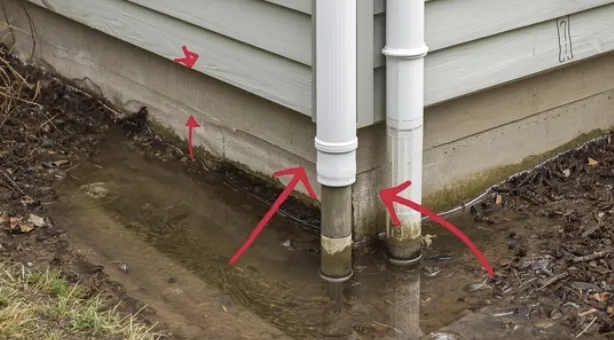
VA Loan Appraisals in Prince William County: Common Issues and Solutions
VA Loan Appraisals in Prince William County: Common Issues and Clear Solutions for Veteran Home Buyers
A VA loan appraisal is the VA program’s official review of a property’s value and basic safety. It confirms fair market value and checks whether a home meets the Department of Veterans Affairs’ Minimum Property Requirements (MPRs).
For veterans buying in Prince William County — in areas like Manassas, Woodbridge, Gainesville, Bristow, Haymarket, and Dumfries — the appraisal can influence loan approval, required repairs, negotiations, and the final closing timeline. This guide explains how VA appraisals work, the most common MPR issues in the county, how to respond to low appraisals, and how to navigate Tidewater, ROV, and repair negotiations with confidence.
What Is a VA Loan Appraisal and Why It Matters
A VA appraisal is a licensed appraiser’s opinion of the home’s fair market value and its compliance with VA MPR standards for safety, soundness, and sanitation. It is not a substitute for a home inspection. While a home inspector looks at everything, a VA appraiser focuses only on what affects habitability and lending eligibility.
In Prince William County, appraisal results can vary widely by neighborhood. Older homes in Woodbridge and Manassas may trigger more MPR concerns, while newer subdivisions in Bristow and Gainesville may present fewer structural issues but tougher comparable sales during fast-moving markets. The comps an appraiser uses play a major role in whether the contract price is supported.
How the VA Appraisal Process Works
The VA appraisal process typically includes:
Lender orders the appraisal after verifying VA entitlement.
The appraiser schedules a visit and inspects accessible areas.
The appraiser selects comparable sales and assesses market value.
The appraiser documents any MPR failures, safety issues, or major defects.
A final report is delivered to the lender for underwriting review.
Typical turnaround: 7–21 days. Typical cost: Buyer-paid unless otherwise negotiated.
Having repair receipts, permits, and photos ready can shorten the lender’s verification process.
Minimum Property Requirements (MPRs) in Northern Virginia
VA MPRs focus on safety, soundness, and sanitation — not cosmetic concerns. Common areas of review include:
Roof condition and evidence of leaks
Electrical safety and absence of exposed wiring
Adequate heating for year-round occupancy
Stable foundation and absence of major structural issues
Clean, functional water and sanitation systems
No deteriorated lead-based paint or hazardous materials
In Northern Virginia, aging roofs, electrical issues in mid-century homes, and drainage problems following heavy rains are top MPR triggers.
Common MPR Problems in Prince William County
Below is a summary of the issues most likely to cause a VA loan delay or denial:
Common IssueSeverityTypical FixEstimated Cost RangeLead-based paint (peeling)HighCertified remediation or encapsulation$500–$6,000Roof leaks or failing roof coveringHighRoof repair or full replacement$500–$12,000+Electrical hazardsHighPanel upgrades, wiring repair$300–$4,500Foundation cracks or settlementHighCrack repair, underpinning, grading$1,000–$15,000+Poor drainage/standing waterMediumRegrading, French drains$300–$6,000
Actual costs vary but these figures help veterans anticipate repair negotiations or escrow needs.

Lead-Based Paint and Asbestos Considerations
If a home was built before 1978, deteriorated lead-based paint becomes an automatic MPR issue. Appraisers may also flag suspected asbestos if it appears friable or damaged. Lenders often require testing or remediation before closing. Obtain contractor quotes early and keep receipts and reports organized. Documentation is essential if value or condition is questioned during an ROV or lender review.
Roof, Electrical, and Foundation Issues
Appraisers commonly flag:
Active roof leaks or missing shingles
Exposed or unsafe wiring
Outdated or overloaded electrical panels
Significant foundation cracks or signs of structural movement
Sagging floors, bowed walls, or compromised support beams
Remediation usually requires licensed professionals. Invoices, permits, warranties, and before-and-after photos speed lender clearance.
Drainage, Egress, and Accessibility Issues

Local appraisers frequently call out:
Standing water near the foundation
Negative grading toward the home
Clogged or broken gutters/downspouts
Blocked exits or windows painted shut
Missing handrails or unsafe steps
These can usually be resolved quickly through grading, drainage corrections, and simple carpentry — as long as documentation is provided.
Real Examples from Prince William County
Manassas: A townhouse had missing shingles and a roof leak. Seller repaired the section and provided documentation. Loan cleared without major delays.
Woodbridge: An older home contained knob-and-tube wiring. Buyer negotiated a credit and used escrow to complete upgrades.
Dumfries: Standing water near a foundation triggered an MPR note. Seller extended downspouts and regraded soil. Appraiser approved repairs after review.
These scenarios show how responsive communication and organized documentation can protect closing timelines.
When a VA Appraisal Comes in Low
A low appraisal doesn’t mean the deal is lost. Here are the primary solutions:
SolutionTimeframeBest Use CaseReconsideration of Value (ROV)7–21 daysAppraiser missed strong comps or key featuresTidewater Initiative30–60 daysNeed time to resolve appraisal disputes or repairsSeller repairs or credits7–30 daysSeller is cooperative and issues are fixableRepair escrow/post-closing30–90+ daysMajor repairs needed after closing
Reconsideration of Value (ROV)
An ROV asks the appraiser to reconsider their value based on improved evidence. Include:
Three to five recent comps
Evidence of improvements the appraiser missed
Repair documentation: invoices, photos, permits
A concise cover letter summarizing your case
Submit it quickly — lenders move faster when evidence is clear and well-organized.
Tidewater Initiative
Tidewater gives lenders authority to temporarily hold the file open while additional comps or documentation are reviewed. It is lender-controlled and typically requires:
Contractor estimates
Clear repair schedules
Signed agreements or escrow
A documented plan
It buys time but still requires organized execution.
Repair Options for VA Appraisal Challenges
Options include:
Seller completes repairs before closing
Buyer pays for repairs using seller credits
Repair escrow where work is completed post-closing
Choose the option that balances urgency, cost, and negotiation leverage. Always use licensed contractors, and keep documents ready for the lender.
Negotiation Strategies After a VA Appraisal Issue
Successful negotiations focus on clear evidence, not emotion. Effective tactics include:
Presenting repair quotes with timelines
Offering seller credits tied to specific issues
Proposing escrow for major repairs
Submitting a structured ROV package
Requesting Tidewater when time is essential
These strategies reassure sellers and lenders that solutions are feasible.
VA Loan Benefits and Eligibility for Prince William County Buyers
Key VA loan advantages:
AttributeDescriptionPractical BenefitNo down paymentUp to 100% financingLower upfront cash neededNo PMINo private mortgage insuranceLower monthly paymentCompetitive ratesVA backing reduces lender riskStrong purchasing powerCOE requiredCertificate verifies entitlementEnables loan guarantee
Eligibility includes veterans, active-duty service members, certain reservists, and some surviving spouses. COE plus lender credit and income standards determine final approval.
How Prince William County’s Market Affects VA Appraisals
Fast-moving markets in areas like Gainesville, Bristow, and Woodbridge can push contract prices above current comparable sales. This often results in appraisal shortfalls. Veterans should monitor local sold data, prepare for potential ROVs, and set realistic expectations when competing against multiple offers.
Choosing a VA-Experienced Realtor
A VA-experienced realtor can anticipate common MPR issues, prepare comps tailored to VA lending, and navigate repair negotiations. Ask potential agents:
How many VA appraisals they’ve handled
How many ROVs or Tidewater cases they’ve resolved
How they document MPR repairs
Which lenders and contractors they partner with
Local familiarity with Prince William County is essential.
FAQ: VA Appraisals in Prince William County
What if my VA appraisal comes in low? Consider an ROV, negotiate seller credits, or explore escrow or Tidewater options.
Can a VA loan be denied after the appraisal? Yes. If major MPR failures cannot be fixed or value is too low to reach agreement.
Do cosmetic issues matter? No. VA focuses only on safety, soundness, and sanitation.
Who typically pays for VA-required repairs? Often the seller, but buyers may negotiate credits or escrow.
How do I prepare for a VA appraisal? Fix obvious safety issues, gather repair documents, and work with a VA-experienced realtor.
About the Author
This guide is written by Gayle “GG” Sfreddo, a licensed Northern Virginia REALTOR®, Military Relocation Professional (MRP), and long-time resident serving Prince William County, Fairfax County, Stafford County, and surrounding communities.
Growing up in a military family has shaped GG’s understanding of the pressure, uncertainty, and tight timelines surrounding PCS moves and VA financing. With 20+ years of experience in Northern Virginia real estate and extensive hands-on work with VA appraisals, MPR repairs, Tidewater cases, and ROV submissions, GG delivers practical, local, and reliable guidance.
This article is built on local transaction experience, VA lending guidelines, appraisal best practices, and neighborhood-specific knowledge across Manassas, Woodbridge, Bristow, Gainesville, Dumfries, and Haymarket.
Veterans and active-duty buyers who want tailored help navigating VA appraisals, repair planning, or negotiations can reach out through MoveMeInVA for expert guidance and a clear path to closing confidently.
